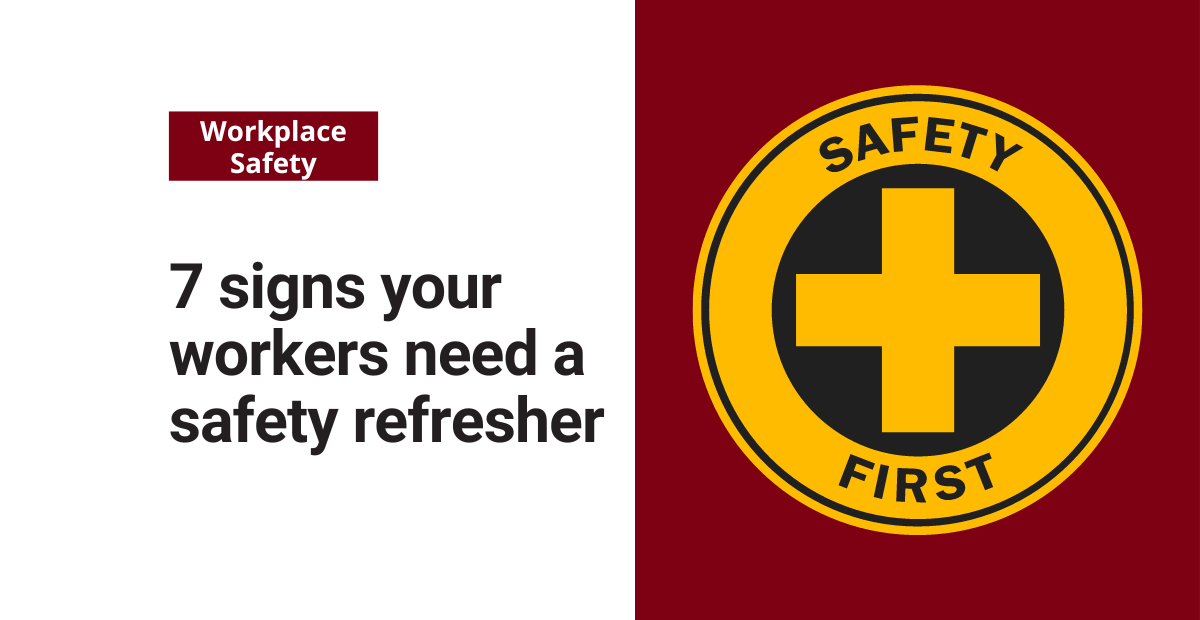It’s easy to fall into the trap of only doing safety training when it’s required. But doing a quick safety refresher every now and then is an easy way to ensure your workers are always alert.
Here are 7 signs that your workers need a safety refresher.
Your workers don’t know what to do in an emergency.
During emergency drills, how do your workers react? Do they know where to go/what to do or are they totally lost?
When you practice for emergencies, you have the opportunity to find knowledge gaps. If your workers seem confused or inefficient during these drills, they may need to be reminded of the site’s emergency preparedness strategy.
A single process contributes to multiple safety incidents.
If you notice that workers keep getting injured in a specific process, there could be many reasons why. Perhaps a piece of equipment needs replacing or maybe the process needs reordering. Another possibility is that your workers either missed or didn’t receive an important safety point for that process.
Workstations are messy and unorganized.
A messy worksite is an unsafe one. If workers don’t keep their stations clean and organized, safety risks increase exponentially. A quick safety refresher on the importance of a clean workstation can go a long way toward reducing incident rates.
Workers ignore or inconsistently follow PPE standards.
Is there a mad dash to put on PPE when the EHS team hits the floor? When asked about PPE, do workers show indifference or active disdain for it?
Maybe they don’t understand just how important the PPE is to their personal safety. Or maybe they just don’t care to wear it. Either way, a refresher may help to influence your workers to wear critical safety gear consistently.
Everyone walks by the same hazards every day.
Seeing the same exact hazards around your facility every day should be a major warning sign to reengage with your workers. The simplest hazards, ignored on a consistent basis, can be the unexpected catalyst for a major safety incident.
If your employees walk by these hazards every day, they may need a reminder of how important it is to fix hazards or notify management of their presence.
The same types of incidents keep happening.
Every time an incident happens, there should be a thorough investigation and set of corrective actions taken. So, if the same types of incidents keep happening, you’re probably going to need to revisit your training for those types of incidents.
With a better understanding of the hazards that lead to these common incidents, workers can protect themselves and each other from harm.
Equipment keeps getting damaged.
There’s a certain level of expected wear and tear for workplace equipment. But constant repairs may be a sign that workers aren’t using the equipment the way they’re supposed to—a considerable safety hazard you shouldn’t ignore.
Observe workers using the frequently damaged equipment and determine whether they’re making a mistake that’s causing the issues. If so, give them a safety refresher course on how to properly use the equipment to avoid both damage and bodily injuries.



